|
| |
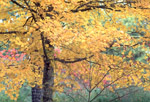 
The Natural Resources Conservation Service —
Helping People Help the Land.
Subscribe to NRCS This Week | NRCS
This Week Archives |
Contact Us |
Where to Get Information
|
eNotes from
NACD |
 TSP Express
(Requires Adobe Acrobat.)
TSP Express
(Requires Adobe Acrobat.)

Florida
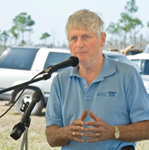 Mallory
Swamp WRP Event in Florida Mallory
Swamp WRP Event in Florida
NRCS Regional Assistant Chief for the East Region Richard Coombe and Florida
NRCS State Conservationist Niles Glasgow were on hand for a ceremony to
recognize NRCS for its financial and technical assistance relative to the
restoration effort on the Mallory Swamp Wetlands Reserve Project (WRP) in
Lafayette County, Florida.
Iowa
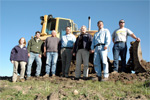 Bremer
County Project Saves Money, Improves Environment Bremer
County Project Saves Money, Improves Environment
 (Requires Adobe Acrobat.)
(Requires Adobe Acrobat.)
It sounds strange, but it's true. Taxpayers
will save around $500,000 on a road reconstruction project in Bremer County,
Iowa, and
at no additional cost, get a wetland that will reduce flooding on the
Wapsipinicon River, clean the water, and protect threatened and endangered
species.
Rhode Island
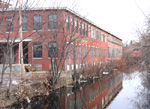 Fish
Return to Once-Polluted River Fish
Return to Once-Polluted River
 (Requires Adobe Acrobat.)
(Requires Adobe Acrobat.)
Environmental conditions in the long-dirty Woonasquatucket have rebounded to the
point that fish are starting to swim upriver and use the area as a breeding
ground again after more than a century of damage done by mills, commerce, and
debris. It’s a breakthrough moment for local river keepers.
Connect to
NRCS' State
News,
Newsroom, and
News Releases!

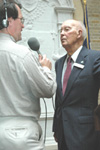 Chief
Norm Berg Honored Chief
Norm Berg Honored
USDA, NRCS, and the American Farmland
Trust paid tribute to former NRCS Chief Norm Berg on the
creation of the new
American Farmland Information Center’s (FIC) Norm Berg Collection.
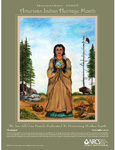 November
is American Indian Heritage Month November
is American Indian Heritage Month
In 1986, President Reagan designated November 23-30 as "American Indian Week." Four years later, President Bush proclaimed the first National American Indian
Heritage Month. Each year since, U.S. Presidents have proclaimed November as
"American Indian Heritage Month."
The NRCS 2007 American Indian Heritage Month Poster is entitled, We are One
Family Dedicated to Protecting Mother Earth. The artist captures the
image of a Care Taker who represents American Indians and all populations as the
stewards of the land. The message is clear; we are all Care Takers who are
in charge of protecting and preserving the gifts of Mother Earth — water, air,
wildlife, and land. The artist is LaDon Smith, a member of the Choctaw
Nation, Boswell, Oklahoma.
Links...
Read
the President's 2007 National American Indian Heritage Month Proclamation.

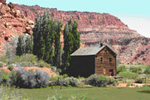 Documenting
Resource Concerns with Digital Photography Documenting
Resource Concerns with Digital Photography
Using digital photography to document resource concerns and illustrate
conservation applications is now commonplace throughout NRCS offices. The
relative ease of capturing, editing, printing, transmitting, and storing digital
images has made photographic documentation easier than ever before in our
conservation history. A few reminders, however, are useful when using
digital photography as a documentation medium.

NRCS Directives for
the Week of November 18, 2007

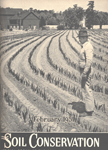 February 1951 Issue of Soil Conservation Magazine February 1951 Issue of Soil Conservation Magazine
This photo is the cover
of the February 1951 edition of Soil Conservation magazine.
"Gladioli on contour on loamy
sand of the Elmer Gandy farm, Cumberland County, New Jersey...the farm is in the
South Jersey Soil Conservation District."
(NRCS photo by Harry R. Slayback -- click to
enlarge).
NRCS This Week features a weekly historical photo and
caption. NHQ, districts, States, RC&D councils, and all other NRCS
entities are invited to submit a historical photo of activities or individuals
who have worked or are working for the agency along with a caption.
The U.S. Department of Agriculture (USDA) prohibits discrimination in all its
programs and activities on the basis of race, color, national origin, age,
disability, and where applicable, sex, marital status, familial status, parental
status, religion, sexual orientation, genetic information, political beliefs,
reprisal, or because all or a part of an individual's income is derived from any
public assistance program. (Not all prohibited bases apply to all programs.)
Persons with disabilities who require alternative means for communication of
program information (Braille, large print, audiotape, etc.) should contact
USDA's TARGET Center at (202) 720-2600 (voice and TDD). To file a complaint of
discrimination write to USDA, Director, Office of Civil Rights, 1400
Independence Avenue, S.W., Washington, D.C. 20250-9410 or call (800) 795-3272
(voice) or (202) 720-6382 (TDD). USDA is an equal opportunity provider and
employer.
| | |


